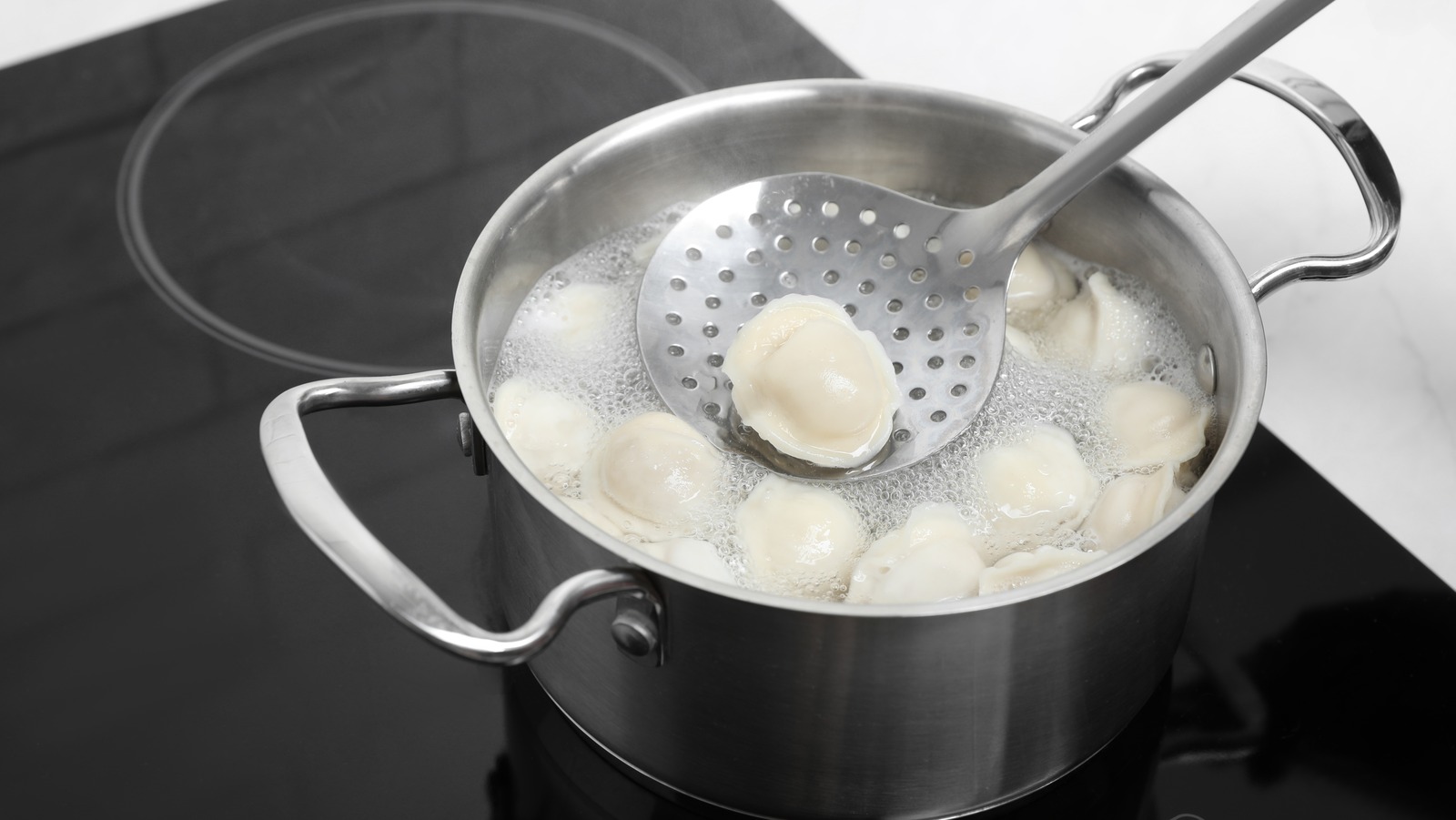You’ve put in the work to boil the perfect ravioli, and now it’s floating in a pot of bubbling water, ready to be plated. You’re antsy to eat it, but wait! Don’t dump it into a colander like it’s just another box of penne.
A colander is not the ideal tool for draining ravioli. These delicate pasta pockets, especially when made with precious homemade pasta dough, are fragile. Pouring them into a colander can cause them to break apart from force or sticking to the metal, leading to a loss of filling and happiness. Instead, you’ll want to grab another useful kitchen gadget.
A more effective approach is using a large slotted spoon, like this one, or a spider skimmer. This method ensures each ravioli is gently lifted from the pot without unnecessary stress on the dough. Preheating the slotted spoon, as celebrity chef Andrew Zimmern recommends, helps prevent pasta from sticking, preserving its shape, integrity, and Instagram-worthiness.
When testing ravioli’s doneness, a gentle scoop and inspection is the preferred method. Extending that same care to the draining process ensures each piece remains intact and ready to absorb sauce. By choosing the right tool, the ravioli stays whole, flavorful, and visually appealing, enhancing the overall dining experience.
The best tools for the job
When you’re cooking delicate foods like ravioli, gnocchi, dumplings, or even poached eggs, the right kitchen tool can really make or break your dish — literally. A spider skimmer, like this one, is perfect for when you’re dealing with larger batches or pieces. Its wide, perforated surface allows you to scoop up multiple pieces at once without disrupting their shape.
On the other hand, a large slotted spoon offers a bit more precision. If you’re working with something like ravioli, where each piece is individually delicate, the slotted spoon gives you more control over handling them without causing any breakage. It’s also great for lifting poached eggs or gnocchi, which need that careful, gentle touch.
Now, regardless of whether you’re using a spider skimmer or a slotted spoon, the goal is to handle these foods with care. Transferring them straight from the cooking water to their sauce not only keeps them intact but also allows the sauce to cling to them better. That little bit of starchy cooking water is key for emulsifying butter-based sauces or helping tomato sauces coat the pasta without them sticking together.
If you’re working with large quantities of foods that aren’t too tiny to fall through the gaps, or need to scoop up multiple pieces at once, the spider skimmer shines. But for those smaller, delicate pieces where precision is key, the slotted spoon will ensure everything stays just the way you want it: perfectly intact and beautifully plated.





